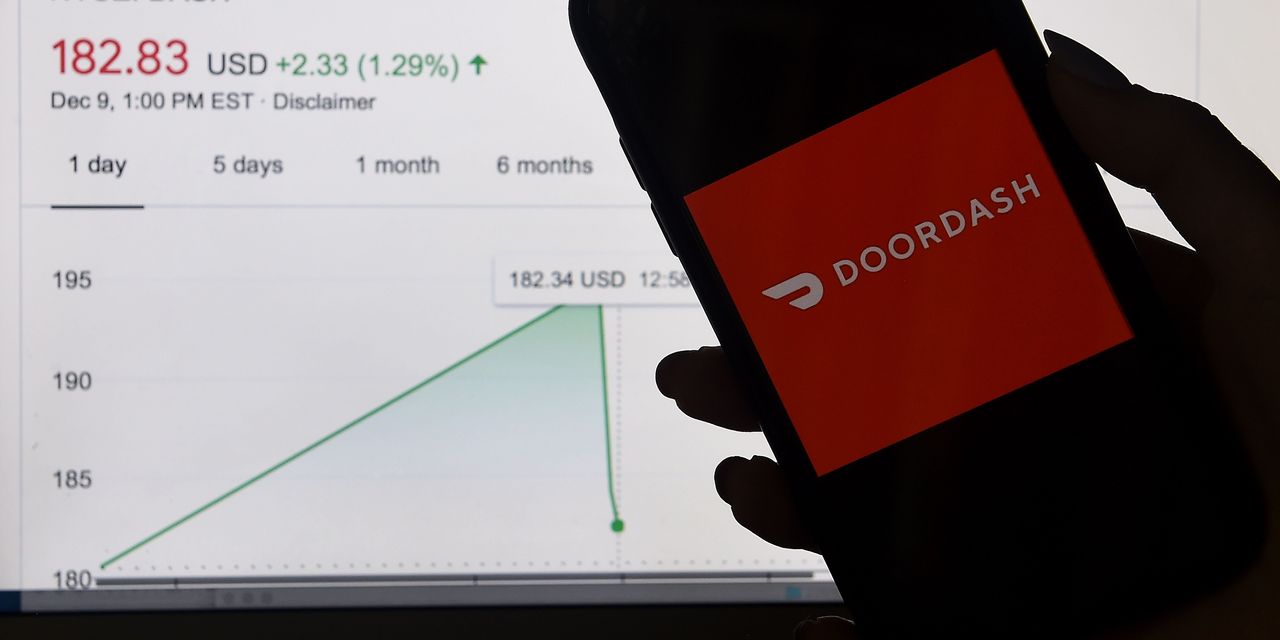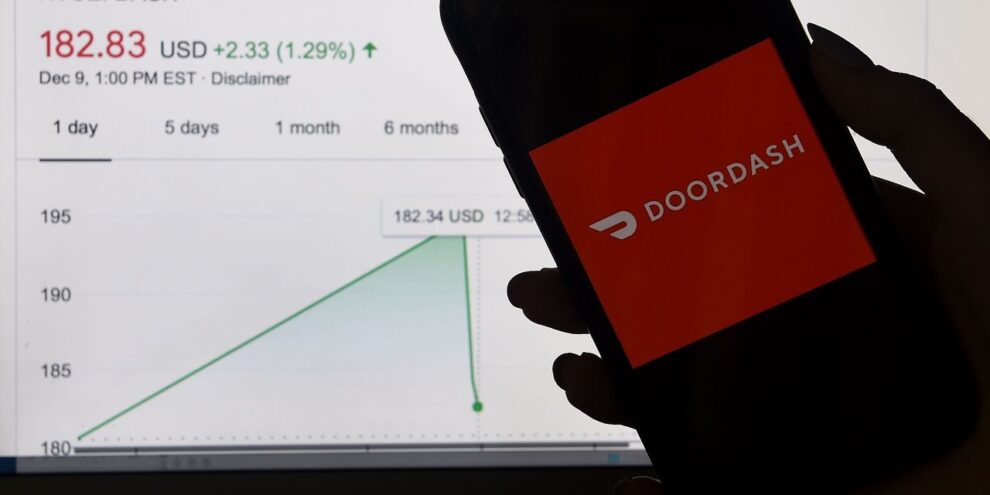
If you just lost a bunch of money in recent high-profile initial public offerings, I have both good news and bad news.
Yes, I’m talking about DoorDash DASH, +7.87% and Airbnb ABNB, +6.97%. Both promptly dropped 20% or more from first-day highs. (Airbnb has broadly recovered.) There’s a good chance many who bought it early may have panicked and sold after taking a big hit.
The bad news here is obvious. You lost money.
The good news: You can consider it tuition for one of the most important classes ever at Market University: How to invest in IPOs. I took this class decades ago when I first started investing, and I still have the class notes. I’ll share the highlights with you now so you better understand how to use IPOs to beat the S&P 500 and Nasdaq.
1. Avoid IPOs because the game is rigged
Now that so many people own stocks in retirement accounts, the old line between “Wall Street” and “Main Street” is blurred. But 1%ers still have a decisive advantage in IPOs. Investors with big accounts get first crack at IPO allocations at the offering price. That price is almost always a lot lower than the first-day market price for hot IPOs.
These 1%ers flip them on day one for instant profits. What’s worse, they sell to you, if you are the sucker buying on the first day of trading.
The bottom line: Don’t be that sucker. Since the game is so badly skewed against you, don’t bother playing — at least not by buying in the open market on the first day. “I say stay away from IPOs if you are not going to get awarded stock on the offering,” says George Young, a portfolio manager with New Orleans-based Villere & Co. “You will pay more than you should.”
2. Wait for IPOs to turn into ‘busted IPOs’
There are some sensible ways to get into IPOs if you don’t have this 1%er advantage. One is through a “busted IPO,” which is when a deal trades below its offering price. This happens surprisingly often, for two reasons.
First, IPOs — especially in technology — are typically high-growth companies with a lot of expectations built into their stock prices. So even a small stumble can send their stocks reeling.
This can happen even with great companies like Facebook FB, +0.70%. Right after its IPO in May 2012, investors worried about Facebook’s ability to monetize its platform and manage the migration to mobile from PCs. Facebook quickly turned into a busted IPO.
That was a great buying opportunity. With help from Tom Vandeventer of the Tocqueville Opportunity Fund TOPPX, +0.76%, I identified Facebook as a buy around $22-$23 shortly after its IPO while writing for another website. The stock is now up over 1,000%.
The other reason IPOs often turn into busted IPOs is because companies and their bankers choose when to go public. They naturally choose a time that benefits them, not you. They’re good at calling market and sector peaks — by launching lots of IPOs. The upshot: IPOs often coincide with a market or sector peaks. (The recent flurry of IPOs may be telling us the market is toppy right now.)
Neither DoorDash nor Airbnb is trading below its IPO price.
3. A company isn’t necessarily a good investment just because you like its product
You might have bought DoorDash or Airbnb on day one because you like its service. This is a big mistake. Yes, Peter Lynch, the Fidelity fund manager with a great long-term record, popularized the tactic of buying companies whose products you like.
But you also have to consider sound advice from Howard Marks, the co-founder at Oaktree Capital. He cautions that “second-level” thinking is key to investing. This means you have to think differently from everyone else. He argues it’s not enough to know a product or service is good. You have to also know other investors haven’t figured this out. Otherwise, they’ve already priced this in, rendering your insight completely meaningless.
As for Lynch, he never bought a stock just because he liked a product. That was just the starting point for more research.
4. Avoid the hype
IPOs are often cutting edge, exciting companies. So they generate a lot of hype. The downside here is investors get drawn into a frenzy and make emotion-based decisions to enter an IPO.
Emotion is always your enemy in investing. Try not to get drawn in. It’s up to you to use discipline here.
One way to avoid this trap is to shut out the emotional stimulus. Go light on “hot IPO” stories, or make a deal with yourself to avoid buying a stock before you dive in. “Hot IPO” stores are here to stay. It’s up to you to use discipline here.
5. Go with the lesser-known names
If you have expertise in a sector or a talent for analyzing companies (or you know someone who does), it pays to go with the lesser-known IPOs for two reasons. First, these IPOs are off the radar, so they won’t be bid up by the media frenzy.
Second, within a few months of the IPO, analysts in the research division of the investment banks that did the IPO will pick up coverage — with glowing reviews, of course. This will drive investors into the stock and move it up.
This recently happened for me with the IPO for Cerevel Therapeutics CERE, -6.29%. This biotech company thinks it knows how to tweak neural networks to treat ailments like Parkinson’s disease, epilepsy, anxiety and substance abuse.
Because Cerevel ranked well in the biotech stock system I use in my stock letter Brush Up on Stocks (link in bio below), I suggested and purchased Cerevel in early November around $10. Then new analyst coverage and news flow pushed Cerevel shares up 80%, to trade above $18 now.
6. Go with direct listings
Many companies shun the IPO game by using direct listings that don’t involve investment banks. They get less cash. But they get a currency for raising capital (the stock), and they steer clear of the rigged IPO game that benefits 1%ers. Quality companies have done this, including Spotify SPOT, +2.45%.
Since these stocks aren’t being heavily promoted by investment bankers in meetings with prospective investors ahead of IPOs, they don’t pop in early trading. Analysts at brokerages with banking divisions that missed out on the fees may openly diss these companies when they start coverage, weighing on stock prices.
You should consider these direct listing companies because they hit the exchanges at more reasonable valuations. Using this logic, I recently bought shares of the tech companies Palantir Technologies PLTR, -4.63% and Asana ASAN, +0.23% and suggested them in my stock letter in early November. They have done quite well, advancing 35% to 80%.
This doesn’t mean all direct listing companies are good investments. You have to make sure they are decent companies, or you need to trust the analysis of someone who has.
7. Wait for the end of lockup periods
When companies come public, large shareholders and insiders typically agree to avoid selling early on to dampen downside volatility. They are blocked by “lockup agreements.” Then they’re freed to sell by “lockup releases,” typically after 90 to 120 days. This dump of supply often creates buyable weakness in recent IPOs.
You can find the lockup release date by searching for the words “lockup” or “lock-up” in the prospectus.
The first DoorDash lockup release comes 90 days after the Dec. 9 IPO, or around March 9, as long as the stock trades above $127.50. (I say around that date because insiders can be let out a few days early.) A big chunk of Airbnb insiders and early investors have to wait until two days after first-quarter earnings are announced, which will happen sometime in April.
Michael Brush is a columnist for MarketWatch. At the time of publication, he owned PLTR and ASAN. Brush has suggested FB, PLTR, ASAN in his stock newsletter, Brush Up on Stocks. Follow him on Twitter @mbrushstocks.
Now read: This month’s hottest IPO isn’t DoorDash or Airbnb — it’s artificial-intelligence company C3.ai




